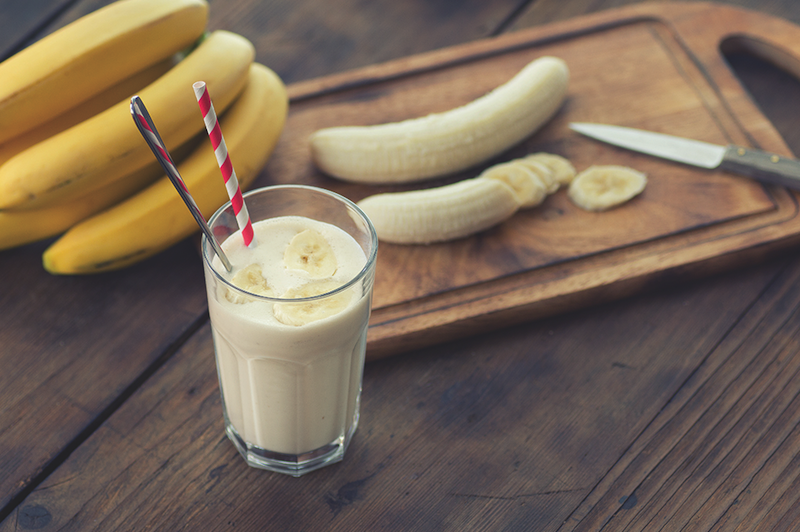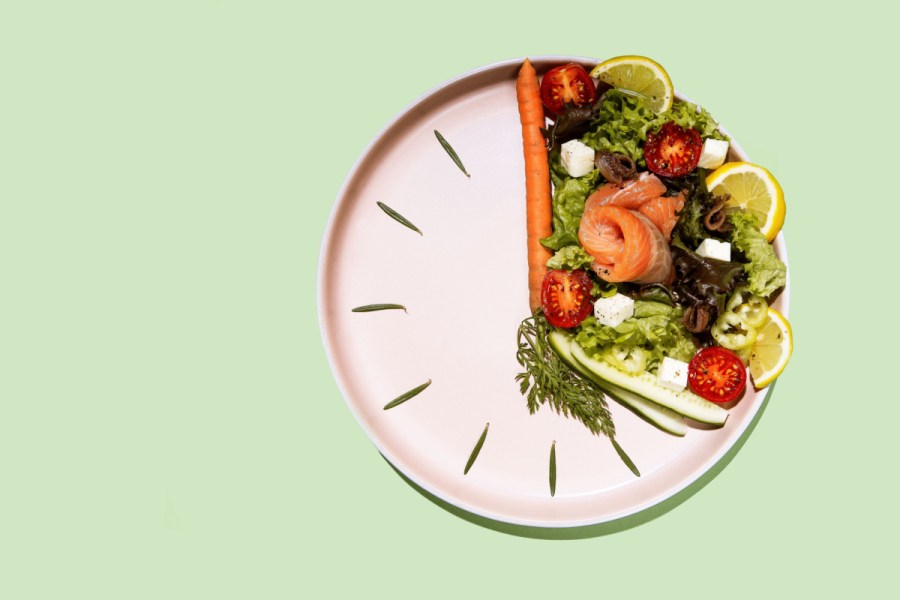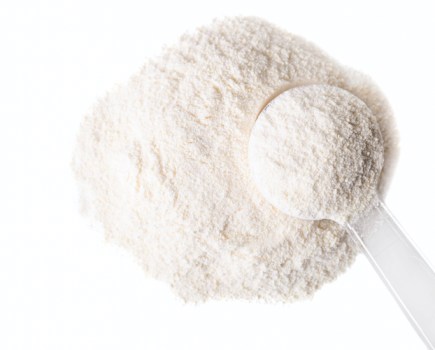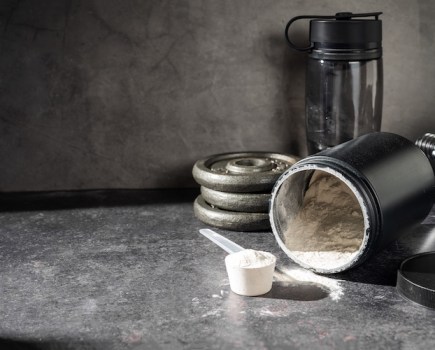Moving less and eating more while working from home? Intermittent fasting (IF) could help you fight the fat without having to worry about overly restrictive diets or calorie counting, writes F45 nutritionist Kim Bowman…
Curious about trying intermittent fasting? You’re not alone. In a nation of snackers, more and more people are turning to this new method of time-restricted eating which offers health and weight-loss benefits. After all, even if you’re regularly rolling out your best exercise mat and working up a sweat, constantly snacking throughout the day could be causing you to hold on to excess fat.
The issue of persistent snacking has become more prevalent since the rise of working from home. With the kitchen in close quarters, the promise of quick eats – free from the prying eyes of co-workers – can be too much to resist.
Home working also tends to mean less movement throughout the day – your two-second commute from the bedroom to the living room isn’t going to do much for your dwindling step count – and less movement means less calorie burn.
Add snacking to the mix and you get a perfect storm for weight gain. The solution? To live life in the fast lane. Here’s all you need to know about intermittent fasting.

IF can help break the cycle of snacking and inactivity during lockdown | Photo: Getty Images
What is intermittent fasting?
Intermittent fasting (IF) is an eating pattern that cycles between periods of fasting and eating. It doesn’t require macronutrient restriction (protein, carbs, fats) but instead focuses on meal timing.
While ‘yo-yo dieting’ can be unsustainable and may only lead to short-term weight-loss results, the goal with IF is to develop lifestyle changes. The mind is connected to your eating habits. Therefore, developing an eating routine that incorporates meal timing automatically creates an internal sense of awareness about your food choices.
Planning meals throughout the day makes you more conscious of the types and portions that you select. By practising cycling through periods of fasting and eating while consuming wholesome, substantial meals with quality ingredients, you will start to lessen cravings for foods high in sodium or refined sugar.
In fact, studies have found that IF has numerous health benefits, not only for maintaining a healthy weight, but also for improving blood sugar levels, cholesterol profile, and reducing inflammation within the body.
Fasting has also been shown to increase levels of the human growth hormone, promote lean muscle development, improve body composition and speed up metabolism.
What’s more, IF protocols have shown promise for those with pre-diabetes or type 2 diabetes. This was indicated by reductions in waist circumference and improvements in insulin sensitivity.
How does intermittent fasting work?
Complex carbohydrates, particularly refined grains, are broken down into sugar which your cells use for energy. Insulin, a hormone made in the pancreas, brings sugar into fat cells and keeps it there.
While fasting, the body adjusts hormones to make fat more accessible. Specifically, there’s a reduction in insulin to facilitate fat burning and use stored fat for energy.
On the other hand, during the eating window, insulin levels are high as the body is digesting and absorbing food. This lasts three to five hours.
The key difference between a ‘fed’ and ‘fasted’ state is that sugar can only enter your cells with insulin. Therefore, a period of fasting has shown to allow insulin levels to drop low enough so that you enter a period of fat burning (so as long as you achieve an overall energy deficit).
While there are a range of beneficial physiological processes that occur when IF is done correctly, the success of weight loss stems from the energy deficit that is created.
There are a number of different IF protocols. But, the 16:8 or 14:10 methods are the most common: cycling through an eight to ten-hour eating window – 8am to 4pm, or 10am to 8pm, for example – followed by 14 to 16 hours of fasting.
What are the benefits of intermittent fasting?
- Weight loss
- Improvements in blood sugar
- Improvements in high blood pressure
- Lowered cholesterol
- Whole-body detoxification
- Reduction in oxidative stress and inflammation
That said, it’s important to note that while there is recent research highlighting the short-term benefits of IF for weight loss and overall health, the long-term effects are unclear.
More evidence is needed on the long-term benefits before it can be prescribed for clinical use. Therefore, the best health strategy is to develop a healthy eating routine that works for your lifestyle while also incorporating regular exercise. You could also look into trying fasted cardio if you’re working towards fat loss goals.
It’s also important to note that you should always speak with a healthcare professional before engaging in a long-term diet change. And if you have a history of eating disorders or take certain medication, IF isn’t recommended.
How to get started with IF:
- Plan your grocery shop for the entire week.
- Optimise food quality by fueling with predominantly wholefoods (fruits, vegetables, beans, lean proteins and healthy fats) while avoiding sugars and refined grains.
- Prepare your own comfort food. Having healthy snacks or sweets will minimise cravings for sugar and processed foods.
- Avoid snacking late at night, while incorporating snacks rich in quality protein and dietary fibre between meals to help manage appetite.
- Avoid sugary drinks and diet sodas.
- Stick to lots of water, black coffee, or an americano within the fasting window.
- Hydration is key during the fasting window to maximise whole-body detoxification.

A banana protein smoothie is an ideal way to start an intermittent fasting day | Photo: Shutterstock
Example 14:10 intermittent fasting day
10:00am Fast Breaker: Banana Protein Smoothie
12:00pm Meal 1: Breakfast Burrito
1:30pm Snack: Chocolate Date Protein Balls
3:30pm Meal 2: Pesto Chicken and Salad Wrap
6:30pm Meal 3: Avocado and Sweet Potato Salmon








